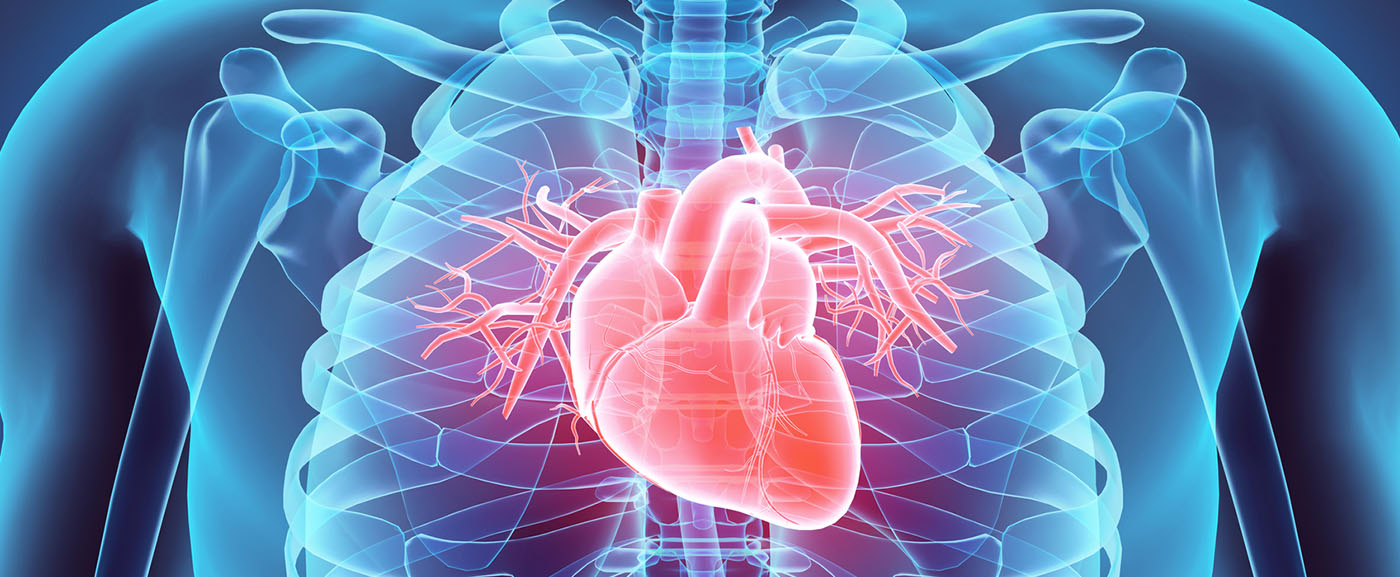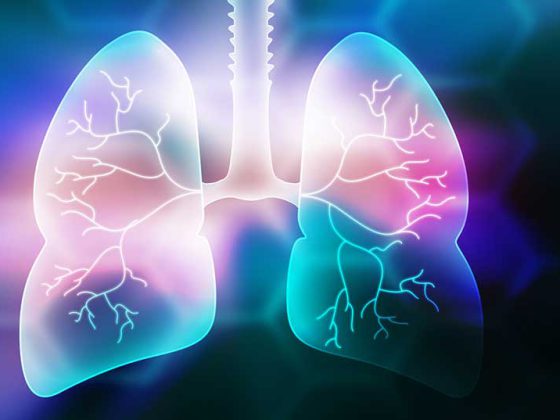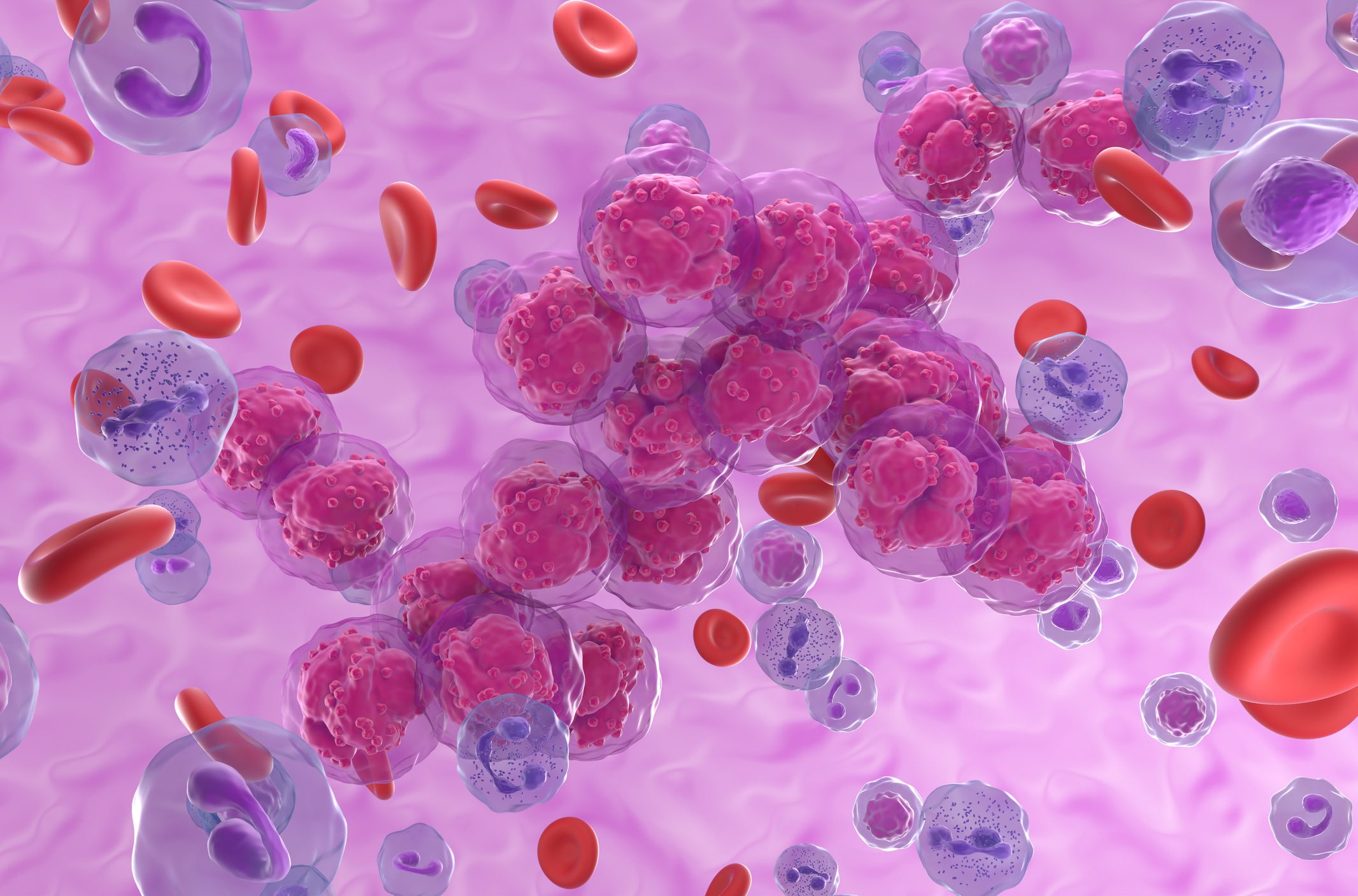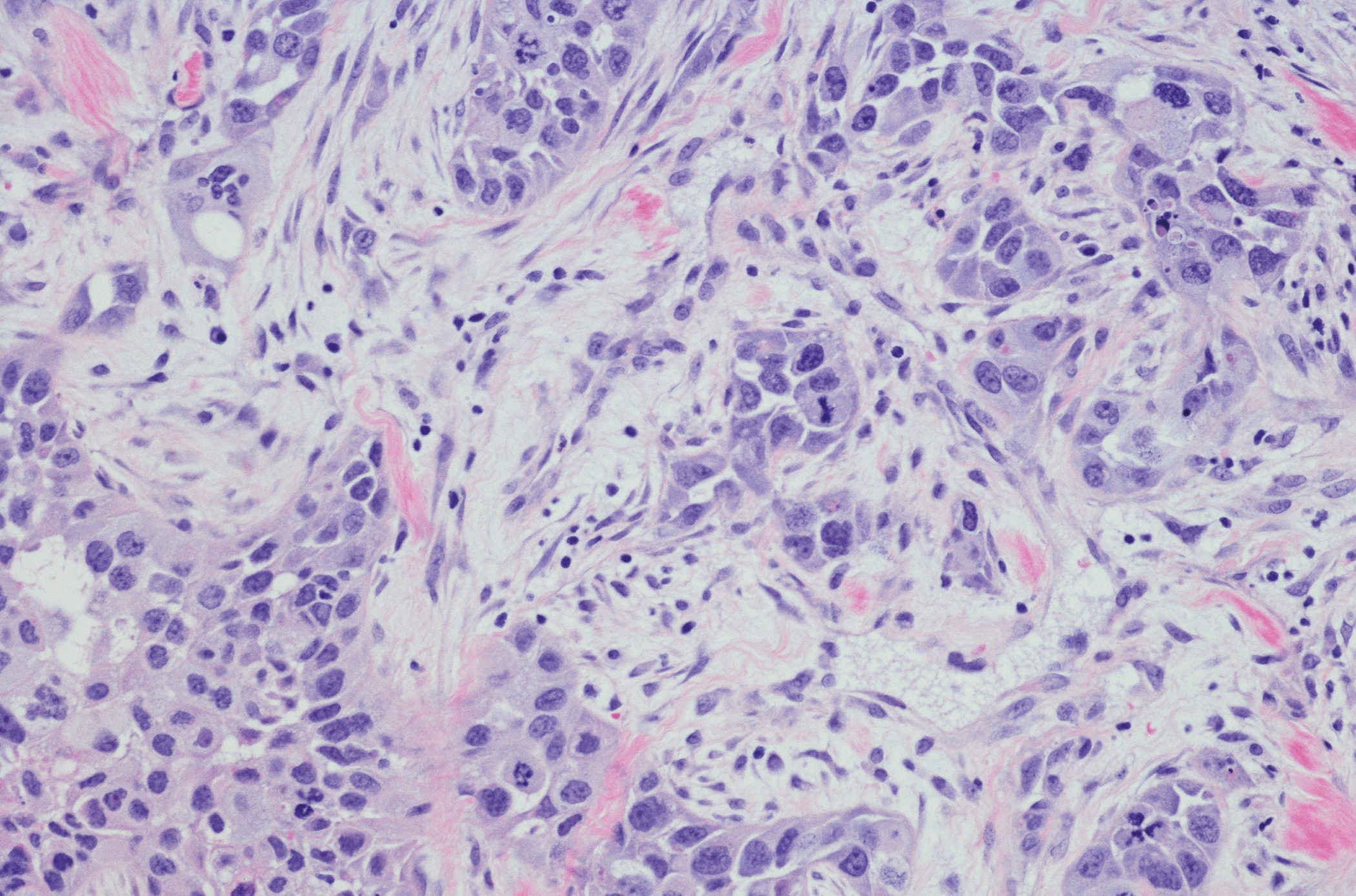Study data in recent years have highlighted the enormous extent to which type 2 diabetes mellitus (T2D) promotes the development of cardiovascular disease. In addition, it became clear that certain drug classes have a direct impact on reducing cardiovascular risk in patients with diabetes. For this reason, the recommendations of the Swiss Society of Endocrinology and Diabetology (SGED) were adapted last year. Relevant studies are presented below and cardiovascular innovations are summarized.
Diabetes is one of the main risk factors for cardiovascular disease. According to a US study, the risk of developing cardiovascular disease is two to three times higher in people with type 2 diabetes (1). Approximately 30% of all coronary stents are implanted annually in individuals with diabetes mellitus. The risk of dying from cardiovascular disease (CVD) is increased by 60% in patients with diabetes mellitus compared to individuals without diabetes mellitus. Comorbidities, such as coronary artery disease, hypertension, heart failure, chronic kidney disease, stroke, COPD, depression, pain, or dementia, play a critical role in assessing risk. According to a British study with data from 1.75 million people with diabetes, patients under 65 years of age are affected by an average of just under three different comorbidities, whereas those over 65 years of age are affected by 6.5 (2). In Switzerland, of the 6.5% of people with diabetes, 25% have symptomatic coronary artery disease and another 25% have asymptomatic coronary artery disease. Also, of the estimated 25% of diabetic patients with heart failure, only about 10% are symptomatic. The heart is closely linked to the kidney. Indeed, the risk of cardiovascular mortality is largely determined by estimated glomerular filtration rate (eGFR) and albuminuria (3).
The study data obtained in recent years to assess such risk factors in diabetes have also been incorporated into the current 2019 European Society of Cardiology (ESC) guidelines (1,4,5). Thus, according to the new ESC risk strategy (moderate, high, very high risk), age and duration of present diabetes play a more important role (Table 1).

Table 1: Cardiovascular risk assessment in patients with type 2 diabetes (ESC- Risk Strategy 2019) (4, 5).
Patients who have had diabetes for more than ten years are therefore automatically considered a high-risk group for cardiovascular disease. A type 2 diabetes diagnosis at a younger age is also an important prognostic factor for the development of cardiovascular disease and premature mortality. In addition, in individuals with diabetes, the presence of risk factors such as older age, hypertension, hypercholesterolemia, obesity, or smoking is directly associated with higher vascular risks. Moreover, in the ESC guidelines, the classification “very high cardiovascular risk” applies not only to diabetic patients with existing CVD, but also to those with organ damage or three or more additional risk factors. When considering this ESC risk strategy, it becomes clear that in reality there are hardly any diabetes patients who fall into the “moderate risk” category, namely only relatively young patients with a diabetes duration of less than ten years, without any other risk factors. Instead, the vast majority fall into the “very high risk” category. Therefore, it is recommended that diabetic patients be monitored more intensively for cardiovascular risk disease and treated more intensively if necessary (5).
The ESC recommendations on cardiovascular risk assessment using imaging techniques were also revised (5). Thus, routine assessments of microalbuminuria are recommended to identify patients at risk for renal dysfunction or at high risk for future CVD. A resting ECG should also be performed in diabetic patients with hypertension or suspected CVD (5)
Active ingredients with cardioprotective potential
In diabetology, it has long been the case that lowering blood glucose levels, whether by dietary measures, lifestyle changes, oral antidiabetics, or, most importantly, insulin, leads to normalization of glucose homeostasis and thus automatically to fewer complications and a lower cardiovascular risk. Today, it is known that not only the reduction of HbA1c, but also the groups of active substances used make a decisive contribution to risk reduction. While a lower HbA1c is important in preventing microvascular and macrovascular complications. However, the new therapies can reduce the risk of cardiovascular events, including cardiac death, much earlier. Thus, with SGLT-2 inhibitors and GLP-1 RAs, two classes of agents currently exist that have shown significant reductions in cardiovascular events, cardiovascular mortality, and all-cause mortality in patients with diabetes (6-13). They also delay the development of chronic kidney disease.
With the introduction of such new groups of agents, knowledge of cardiovascular outcomes has expanded significantly in recent years. The mandatory introduction of cardiovascular outcome trials (CVOT) for every new diabetes drug by the U.S. Federal Drug Administration (FDA) played a major role in this development. Thus, since 2008, all new drugs in the DPP-4 inhibitor, SGLT-2 inhibitor, and GLP-1 receptor agonist classes have been evaluated for cardiovascular safety. The 2020 update of the SGED recommendations for the management of type 2 diabetes will incorporate the results of these CVOT studies. In addition, the new SGED guidelines presented in detail in this article are recommendations for the best possible therapy.
SGLT-2 inhibitors
Currently, Switzerland has four SGLT-2 inhibitors approved for the treatment of diabetes: empagliflozin, canagliflozin, dapagliflozin, and ertugliflozin. Empagliflozin reduced cardiovascular mortality, all-cause mortality (p<0.001), and risk of hospitalization for heart failure (p=0.002) in patients with established cardiovascular disease in the EMPA-REG-OUTCOME trial (6, 14). Canagliflozin also showed a reduction in the primary composite cardiovascular endpoint in patients with cardiovascular disease or associated risk factors in the CANVAS trial program. However, the SGLT-2 inhibitor failed to achieve significance with respect to cardiovascular mortality (14, 7). Patients with cardiovascular disease or associated risk factors achieved a statistically significant reduction in heart failure hospitalizations with dapagliflozin versus placebo in the DECLARE-TIMI 58 trial (2.5% vs. 3.3%; p<0.005), and in the composite endpoint of hospitalization due to heart failure or cardiovascular death (4.9% vs. 5.8% p=0.005) (8). The phase III VERTIS CV trial of the fourth approved SGLT-2 inhibitor ertugliflozin, published in 2020, in patients with T2D and cardiovascular disease,(15) failed to show superiority of ertugliflozin compared with placebo for the primary endpoint, but again reduced the risk of hospitalization for heart failure by 30%. Fortunately, among the SGLT-2 inhibitors, only 2 side effects are clinically relevant: Ketoacidosis in insulin deficiency and genital infections.
GLP-1 receptor agonists
Glucagon-like peptide 1 (GLP-1 RA) receptor agonists also showed some benefits in terms of cardiovascular outcomes. For example, the GLP-1 RA liraglutide was shown in the LEADER trial to significantly reduce cardiovascular mortality and all-cause mortality in patients with cardiovascular disease or associated risk factors (12, 16). Lixisenatide was shown to be noninferior to placebo with respect to the primary composite cardiovascular endpoint in the ELIXA trial, but without a beneficial effect on cardiovascular outcome (16). Semaglutide was also confirmed to be non-inferior to placebo in 3-point MACE, as well as showing potential superiority (3-point MACE: 26% reduction; p<0.001 for noninferiority; p=0.02 for superiority) (11). In addition, a significant reduction in nonfatal stroke and myocardial infarction, but no effect on cardiovascular mortality or all-cause mortality was observed. Exenatide also proved non-inferior to placebo in the EXSCEL study. However, no differences were shown in cardiovascular mortality, incidence of nonfatal myocardial infarction or stroke, or hospitalization for heart failure (11, 12, 16-18). The most recently approved GLP-1 RA agent is dulaglutide. In the phase III, long-term REWIND trial, participants had no prior cardiovascular disease but only an increased risk of CV (13). Dulaglutide showed a 12% (p = 0.028) reduction in relative risk with respect to the occurrence of severe CV events (MACE-3) compared with placebo, regardless of whether clinically manifest prior CV disease or only risk factors for it were present.
Efficacy differences between SGLT-2 inhibitors and GLP-1 receptor agonists.
Both SGLT-2 inhibitors and GLP-1 receptor agonists are predominantly recommended for secondary cardiovascular prevention. Although both classes of agents have beneficial effects on cardiovascular disease and cardiovascular mortality, differences exist between the two classes in terms of their efficacy in different indications. Thus, SGLT-2 inhibitors have advantages for the prevention and treatment of heart failure. Empagliflozin (6) and liraglutide (12) also reduce cardiovascular and all-cause mortality. On strokes, SGLT-2 inhibitors seem to have no effect (6-9), whereas GLP-1 RAs reduce such events (10-14). GLP-1-RA also appears to be associated with a benefit on the incidence of micro- and macroalbuminuria. In contrast, SGLT-2 inhibitors also showed an effect on hard end points such as reduction in eGFR of 40-50%, delay in progression of renal disease, later initiation of renal replacement therapy, or later renal death.
Combination of SGLT-2 inhibitors and GLP-1-RA.
Although no cardiovascular outcome studies have yet been performed on the combined use of SGLT-2 inhibitors and GLP-1-RA, studies nevertheless indicate that a combination of both classes has additive effects on reducing HbA1c, weight, and blood pressure (19-21). For example, in the EXSCEL study, approximately 10% of patients were also treated with an SGLT-2 inhibitor in addition to the GLP-1 RA exenatide LAR. Matched analysis of these data showed that patients on combination therapy (n= 575) were at an advantage over those receiving the GLP-1 RA exenatide LAR alone (n= 575). Thus, a significant reduction of 79% in cardiovascular mortality and 59% in all-cause mortality was observed in them. The 3-point MACE also decreased numerically by 15%. Also significantly improved with combination therapy was eGFR compared with exenatide LAR alone (22). Both the ADA/EASD consensus, the new ESC/EASD guidelines and the SGED recommend a combination of the two classes in view of the additive effects. As not all health insurances in Switzerland reimburse the costs so far, it is recommended to obtain a cost approval. In a Danish observational study published in 2020, 66,000 patients with diabetes mellitus were treated with different combination therapies (23). Among these, metformin plus sulfonylurea proved to be the worst combination in terms of 3-point MACE, severe hypoglycemia, and all-cause mortality. In contrast, a combination of metformin, SGLT-2 inhibitor, and GLP-1-RA showed the best results in all three endpoints.
DPP-4 inhibitor
Cardiovascular outcome studies have demonstrated noninferiority of the DPP-4 inhibitors alogliptin, saxagliptin, sitagliptin, and linagliptin to placebo. However, it should be noted that the patients included in these studies were already receiving standard T2D care with respect to T2D management and cardiovascular risk management (14). In their new guidelines, the SGED/SSED concluded that based on various cardiovascular endpoint studies, DPP-4 inhibitors are safe and easy to use, but they do not show beneficial effects on cardiovascular events (24, 25).
SGED/SSED recommendations for the treatment of type 2 diabetes mellitus
Lifestyle, lipids and blood pressure
A cornerstone of diabetes management is motivation to make lifestyle changes. The SGED recommends regular physical activity (150 minutes per week), for example through daily walks in nature and individually designed healthy food. The recommendation is to use less highly processed foods and instead favor fiber-rich carbohydrates and certain monounsaturated and polyunsaturated fats. Beverages sweetened with sugar should also be avoided. Overall, calorie intake should be lower, not least to achieve the goal of 5% weight loss. Most patients fear hypoglycemia and weight gain as side effects of certain therapies. For this reason, drugs that do not have these side effects are preferable.
In addition to lifestyle changes – which include quitting smoking – and blood glucose control, blood pressure and lipid profile should also be monitored. To achieve LDL cholesterol and blood pressure targets, an update to the ESC guidelines was presented in 2019. Accordingly, for patients with very high cardiovascular risk and persistently high LDL levels, despite treatment with the maximum tolerable statin dose in combination with ezetimibe (or in case of ezetimibe intolerance), the use of a PCSK9 inhibitor is recommended. According to the SGED guidelines, the first choice for diabetes treatment is a statin with high efficacy (e.g., atorvastatin and rosuvastatin). If target levels are not achieved, ezetimibe should be added. If the goal is not achieved even then, the administration of PCSK9 inhibitors may be considered (5).
The target value for blood pressure should generally be 130/<80 mmHg. In high-risk patients, diastolic blood pressure should be >70 mmHg. In younger patients, systolic blood pressure may range from 130 mmHg to 120 mmHg, while a value of 130-139 mmHg is recommended for individuals over 65 years of age.
Essential recommendations for therapy
Before prescribing or giving additional medications, the attending physician should ask three important questions, according to SGED/SSED.

1. does the patient need insulin?
Patient’s HbA1c level >10% and clinical symptoms of insulin deficiency, without features of metabolic syndrome: administration of insulin is never wrong. After normalization of the metabolic situation, a decision should be made about further insulin treatment. However: a few patients may have type 1 diabetes or chronic pancreatitis.
2. how is the kidney function?
If eGFR < is 30 mL/min, most medications cannot be prescribed. Recently, canagliflozin (100 mg) can be passed to dialysis in the presence of macroalbuminuria even with an eGFR < 30 mL/min.
3. is heart failure present?
Sulfonylureas and DPP-4 inhibitors: no effect on reduction of mortality and cardiovascular events. In 75% of heart failure cases in type 2 diabetes: heart failure with preserved ejection fraction (HFPEF), with left ventricular ejection fraction at >40%. In 25%: Heart failure with reduced ejection fraction (HFREF). In heart failure, SGLT-2 inhibitors are the preferred class of agents. Glitazones (pioglitazone) should be avoided.
Based on these three initial questions, the best individual therapy can be selected for each patient. The key recommendations for general practitioners are summarized in the figure below. The detailed instructions can be found in the SGED recommendations:

| Notes on antidiabetic medication and cardiorenal prevention.
– The newer basal insulins (e.g., insulin degludec (26) and insulin glargine U300(27)), have a lower incidence of hypoglycemia compared with first-generation analogs as well as NPH insulin, especially at night. |
| Summary of the SGED recommendations
1. is insulin needed? HbA1c level high (>10%), clinical symptoms of insulin deficiency (weight loss, polyuria and polydipsia) and no metabolic syndrome, visceral obesity and typical dyslipidemia, administration of insulin is never wrong. After the metabolic situation has normalized, a decision can be made about further administration of insulin. Rarely, type 1 diabetes or chronic pancreatitis may be present. |
Take-Home-Message
- Among persons with diabetes mellitus in Switzerland, about half suffer from coronary heart disease and an estimated 25% from heart failure. The vast majority of diabetes patients are in a high or very high ESC risk category.
- At the beginning of diabetes therapy, a possible insulin requirement, kidney function and possible heart failure should be clarified.
- Control of HbA1c is an essential therapeutic goal.
- For high or very high cardiovascular risk, SGLT-2 inhibitors plus metformin or GLP-1 RA plus metformin are recommended in the first line. Both classes reduce cardiovascular events and nephropathy progression. Empagliflozin and liraglutide are associated with a significant reduction in mortality. Given the additive effects of SGLT-2 inhibitors plus GLP-1-RA, SGED recommends the combination of both drug classes.
- In heart failure, SGLT-2 inhibitors (in combination with and metformin) are the preferred class of agents. Glitazones should be avoided.
References













